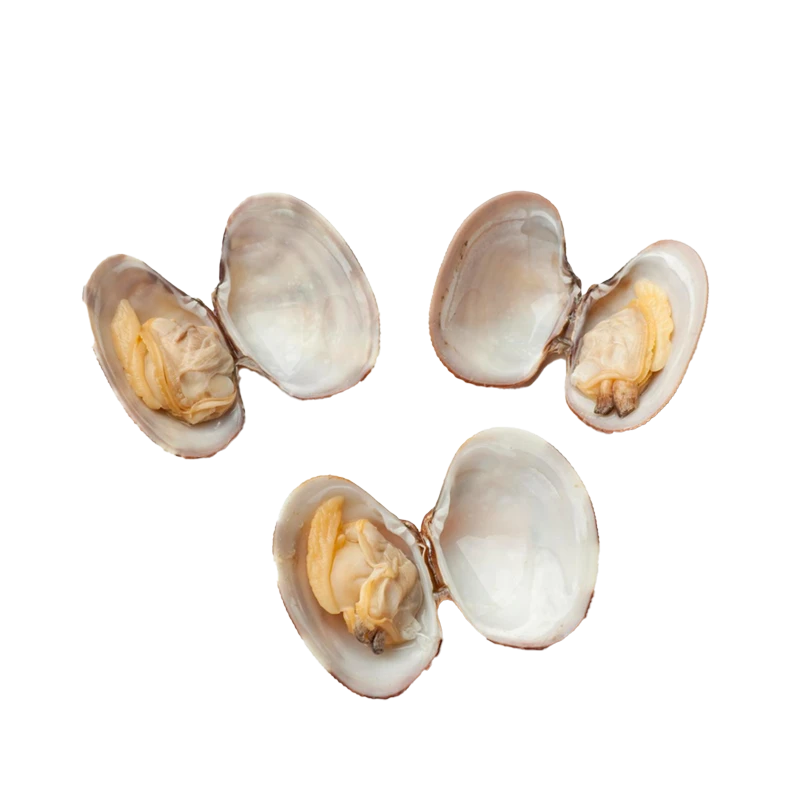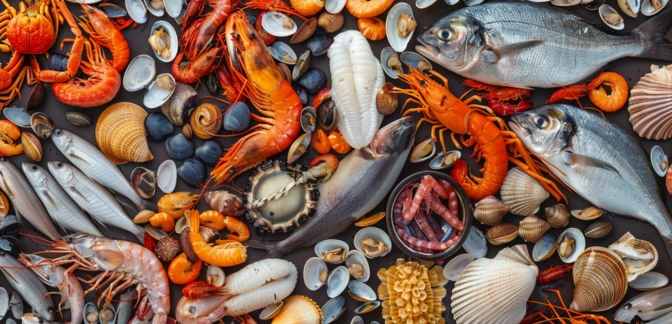Clams — Nutrients, Health Benefits, And Shopping Tips

Written by Listonic Team
Last update on September 5, 2024
Nutrients
Nutrition facts
Amount per 100 g
Calories
🔥 148 kcal
| Nutrition per: 100 g | Value | % Daily Value* |
|---|---|---|
| Carbs | 5 g | 1.82% |
| Fiber | 0 g | - |
| Sugars | 0 g | - |
| Glycemic Index | 0 | - |
| Protein | 26 g | 52% |
| Sodium | 98 mg | 4.26% |
| Total Fat | 2 g | 2.56% |
*The % of Daily Value (DV) tells you how much a nutrient in a serving of food contributes to a daily diet. 2,000 calories a day is used for general nutrition advice.
26 g
💪 High Protein Content
Key takeaways
Health benefits
- Rich in protein, essential for muscle growth, repair, and overall body function.
- High in iron, which helps in the formation of red blood cells and prevents anemia.
- Contains essential vitamins and minerals such as Vitamin B12, zinc, selenium, and omega-3 fatty acids, which support energy metabolism, immune function, and overall health.
- Supports heart health with omega-3 fatty acids, which can help lower cholesterol levels and reduce the risk of heart disease.
- Low in fat and calories, making them a healthy and nutritious addition to a balanced diet.
Health risks
- Risk of contamination with harmful bacteria, viruses, or toxins, particularly in raw or undercooked clams, leading to foodborne illness.
- Potential for allergic reactions in individuals with shellfish allergies, causing symptoms like itching, swelling, or anaphylaxis.
- High cholesterol content which can contribute to increased cholesterol levels if consumed in large quantities, particularly in individuals sensitive to dietary cholesterol.
- Risk of heavy metal exposure such as mercury, depending on the source of the clams, which can pose long-term health risks with excessive consumption.
How to choose clams
Fresh clams should be purchased alive, with shells tightly closed or that close when tapped. Smell the clams before buying; they should have a clean, ocean-like scent, not fishy or foul.
Discard any clams that have cracked shells or those that remain open when handled. Good clams will be heavy and full, indicating that they are alive and well-hydrated.

How to store clams
Clams should be stored in the refrigerator, covered with a damp cloth. Keep them in a bowl or container to catch any liquid. Properly stored, fresh clams can last up to two days.
Airtight containers can suffocate clams, so avoid using them. It's important to keep clams cool but not in direct contact with ice. Do not store clams in water, as this can cause them to die and spoil. Ensure they are used promptly for the best quality.
✅ Extra Tip
How long do they last?
Clams can last for 1-2 days in the refrigerator if kept in a breathable container. For longer storage, clams can be frozen for up to 3 months. Ensure they are tightly sealed before freezing.
What to do with leftovers?
Leftover clams can be used in a variety of seafood dishes. Chop them and add to pasta dishes with garlic, white wine, and herbs for a classic meal, or mix them into a clam chowder with potatoes and cream for a comforting soup. Clams are also great in stews or paella, where their briny flavor adds depth to the dish.
Use clams in a seafood salad with lemon, olive oil, and fresh herbs, or add them to a pizza with garlic, cheese, and parsley for a unique twist. If you have a lot of clams, consider making a batch of clam dip with cream cheese, lemon, and hot sauce, perfect for serving with crackers or bread. Clams can also be stuffed and baked with breadcrumbs and herbs, or used in a risotto with Parmesan and butter for a rich, creamy dish. For a quick snack, try sautéing clams with garlic and butter, then serving them with crusty bread for dipping.
👨⚕️️ Medical disclaimer
Discover products from other categories
Listonic Team
Fact-checked
Our editorial team checked this article to make sure it was accurate at the time of publishing it.
Get the top-rated shopping list app on your phone!







